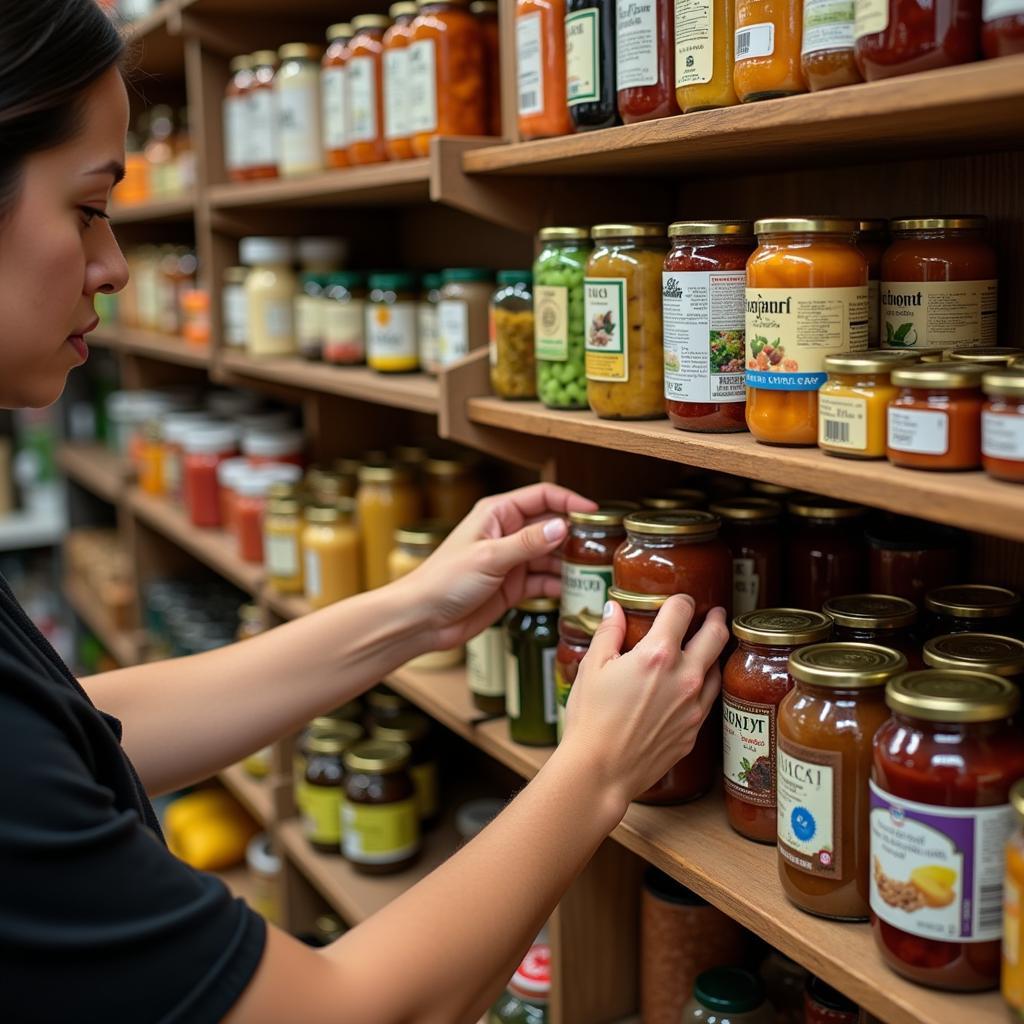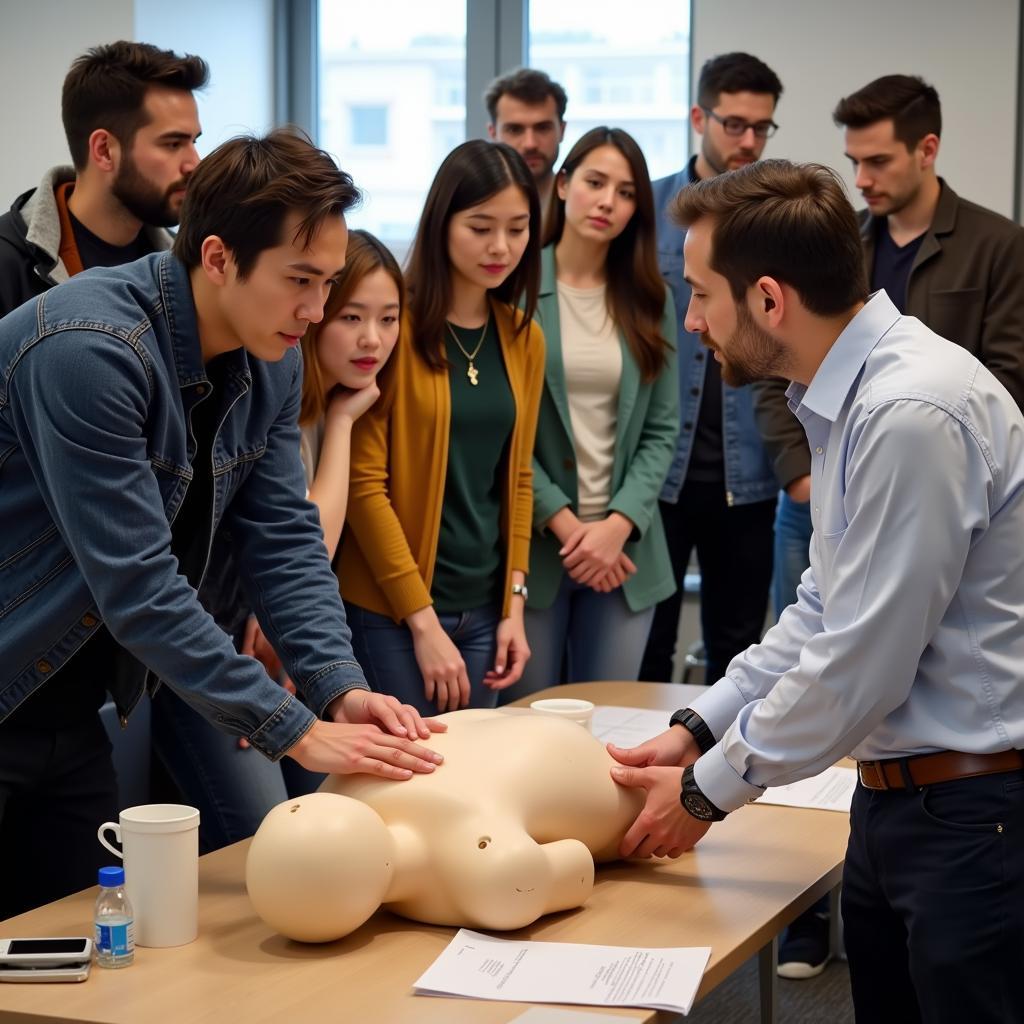The world can change in an instant. Whether it’s a natural disaster, economic collapse, or unforeseen global event, the idea of being caught unprepared is a chilling thought for many. This is where “Doomsday Food Preppers” come in – individuals who take proactive steps to ensure their survival and well-being in the face of potential crises by stockpiling food, water, and other essential supplies. While the term “doomsday” might conjure images of extreme scenarios, the reality is that food prepping is a spectrum, and many individuals engage in it as a practical way to enhance their resilience and self-sufficiency.
Understanding the Motivation: Why Food Prepping?
At its core, food prepping is about preparedness and taking control of your destiny. For many, it provides a sense of security and peace of mind knowing they have a safety net in place should the unexpected occur. This could be anything from a short-term power outage to a longer-term disruption in supply chains.
Common motivations for food prepping include:
- Natural disasters: Earthquakes, hurricanes, floods, and wildfires can disrupt infrastructure and access to essential resources.
- Economic instability: Job loss, inflation, or financial crises can impact food security.
- Social unrest: Civil unrest or political instability can lead to disruptions in daily life.
- Personal emergencies: Unexpected job loss or medical emergencies can make it difficult to access food.
Beyond the practical reasons, food prepping can also be a fulfilling hobby that promotes self-reliance, resourcefulness, and a deeper connection to food systems.
Essential Supplies: Building Your Doomsday Food Stash
Building a doomsday food supply doesn’t have to be overwhelming. The key is to start gradually and prioritize items based on your individual needs, dietary restrictions, and storage space.
Must-Have Food Items for Long-Term Storage:
- Water: The most crucial element for survival. Aim for one gallon per person per day.
- Canned Goods: Fruits, vegetables, beans, soups, and meats offer a long shelf life and nutritional variety.
- Dried Goods: Rice, beans, lentils, oats, and pasta are calorie-dense and store well.
- Protein Sources: Canned tuna, salmon, chicken, peanut butter, and protein bars provide essential amino acids.
- Fats and Oils: Olive oil, coconut oil, and nut butters are calorie-rich and can enhance flavor.
- Salt, Sugar, and Spices: Essential for seasoning and preserving food.
 A person organizing their doomsday food supplies.
A person organizing their doomsday food supplies.
Don’t Forget These Essentials:
- First-aid kit: A comprehensive kit with bandages, antiseptics, pain relievers, and other medical supplies.
- Water filtration system: To purify water from natural sources.
- Cooking equipment: Portable stove, fuel, cookware, and utensils.
- Light and communication: Flashlights, batteries, candles, and a hand-crank radio.
- Hygiene and sanitation: Soap, hand sanitizer, toilet paper, and garbage bags.
Tips for Building Your Stockpile:
- Start small: Gradually add items to your pantry each week or month.
- Focus on shelf-stable foods: Choose items with a long shelf life.
- Rotate your stock: Use a first-in, first-out system to prevent spoilage.
- Consider dietary needs: Plan for allergies, intolerances, and special diets.
- Store properly: Keep food in airtight containers in a cool, dry place.
The Importance of Knowledge and Skills
Having a stockpile of food is only one aspect of preparedness. It’s equally important to develop essential skills and knowledge that will be invaluable in a crisis situation.
Key Skills to Acquire:
- First Aid and Basic Medical Care: Learn how to treat minor injuries, administer CPR, and handle common medical emergencies.
- Fire Starting and Safety: Understand how to safely build a fire for cooking, warmth, and water purification.
- Water Collection and Purification: Learn methods for collecting and purifying water from natural sources.
- Basic Gardening and Food Preservation: Acquire skills for growing your own food and preserving surplus harvests.
- Self-Defense and Security: Consider learning basic self-defense techniques and security measures.
 A group of people participating in a first-aid training course.
A group of people participating in a first-aid training course.
Doomsday Food Preppers: Beyond the Stereotypes
The media often portrays doomsday preppers as eccentric individuals living in bunkers. While there are certainly those who take prepping to the extreme, the reality is that most preppers are everyday people who are simply taking practical steps to be prepared.
Food prepping is not about living in fear, but about taking responsibility for your well-being and the well-being of your loved ones. It’s about having a plan, building resilience, and facing the unknown with confidence.
Conclusion
In a world where uncertainty is a constant, doomsday food preppers offer a valuable perspective on preparedness and self-sufficiency. By taking proactive steps to stockpile food, water, and other essentials, they demonstrate a commitment to their own well-being and the well-being of their communities. Whether you’re just starting to explore the world of prepping or you’re a seasoned survivalist, remember that knowledge, skills, and community are just as important as any physical supplies you may accumulate.
For those seeking guidance and support, Mina Cones Food is here to help you navigate the world of food prepping. Contact us at 02437655121, email us at minacones@gmail.com, or visit our store located at 3PGH+8R9, ĐT70A, thôn Trung, Bắc Từ Liêm, Hà Nội, Việt Nam. Our dedicated team is available 24/7 to answer your questions and assist you in building a resilient future.